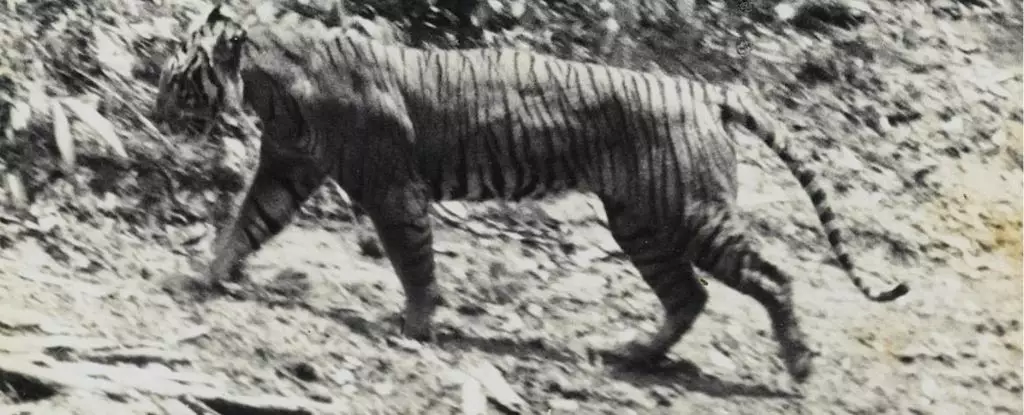The Sumatran tiger, an endangered species, was believed to be the last remaining tiger on the Sunda Islands in Indonesia. However, the Javan tiger, which was presumed to be extinct since 2008, might just have resurfaced. In 2019, Ripi Yanur Fajar claimed to have seen a tiger in West Java and reported it to researchers. Subsequent investigations revealed footprints, claw marks, and a strand of hair that matched the genetics of the Sumatran tiger with a 97 percent similarity to a museum specimen of the Javan tiger from 1930. While this discovery gives hope for the existence of the Javan tiger, further studies are needed to confirm its presence in the wild.
Once widespread in forests and thickets in Java, the Javan tiger’s population has drastically declined over the years due to habitat loss and human interference. With Java being the most populous major island in the world, forest cover has been depleted to make way for agriculture and human settlements. As a result, the native prey of the Javan tiger has diminished, leading them to hunt livestock and eventually being targeted as pests. By the 1970s, only a few Javan tigers remained in wildlife reserves and national parks in East and West Java. The habitat destruction and human-wildlife conflict have pushed the Javan tiger to the brink of extinction.
Despite the recent discovery of potential evidence suggesting the existence of the Javan tiger, the species still faces significant threats to its survival. The rapid loss of habitat in Java, with only about 2 percent of original lowland forests remaining, poses a severe challenge to the ecosystem and its inhabitants. Java leopards, often mistaken for tigers, are considered the last protectors of the dwindling forests. Conservation efforts are crucial to ensuring the survival of the Javan tiger and other wildlife in the region. Without immediate and effective conservation measures, the Javan tiger’s future remains uncertain.
The resurgence of the Javan tiger, if confirmed, should serve as a wake-up call for increased conservation efforts and habitat protection. Preserving the remaining forests and creating sustainable solutions to human-wildlife conflict are essential to safeguarding the Javan tiger and its ecosystem. Collaborative research, genetic studies, and on-the-ground conservation initiatives are needed to ensure the long-term survival of the Javan tiger and prevent its extinction. It is imperative for governments, local communities, and conservation organizations to work together to protect the unique biodiversity of Java and secure a future for the Javan tiger.
While the rediscovery of the Javan tiger offers a glimmer of hope for its survival, the species continues to face numerous challenges that threaten its existence. Only through dedicated conservation efforts, environmental protection, and community engagement can we ensure that the Javan tiger roams the forests of Java once again. The clock is ticking, and the fate of this majestic predator hangs in the balance. It is time to act decisively and collectively to preserve the legacy of the Javan tiger for generations to come.

Leave a Reply